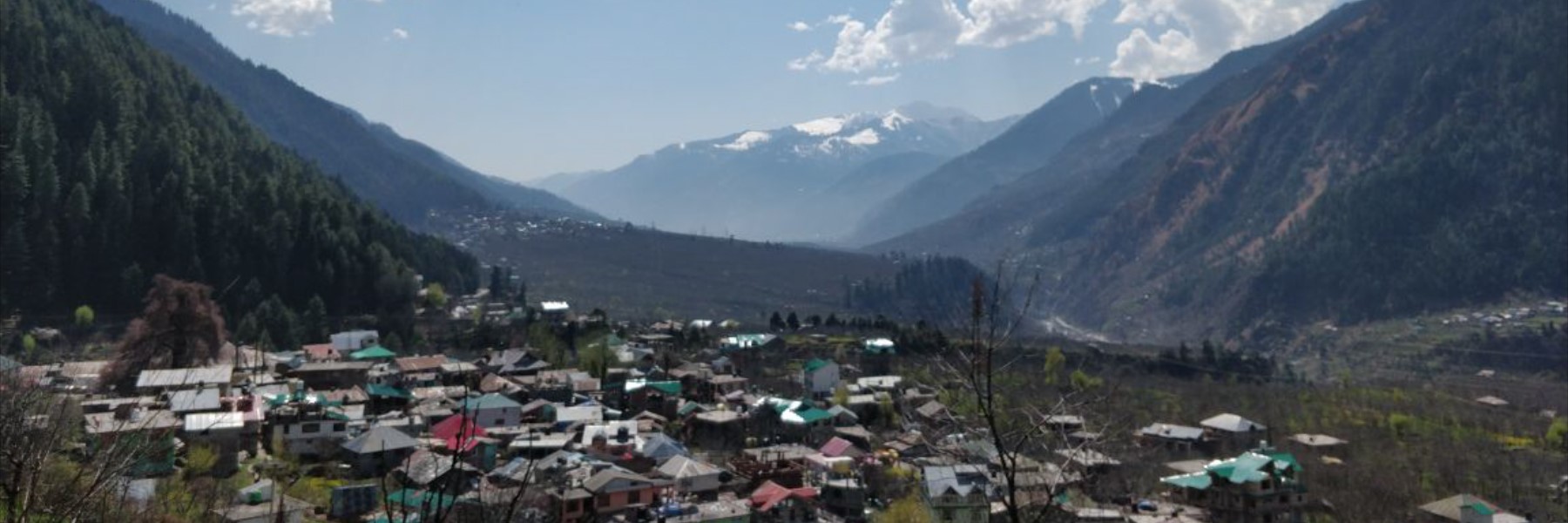
Sorry, we couldn't find anything that matches your search.
Destination

Famous Places to Explore in Hyderabad
A vibrant city with the imposing...

Raipur Tourist Places | Best Place to Visit
The stronghold of several erstwhile...

Ahmedabad
Declared as India's first UNESCO World...
#
Jagatsukh
Around 12 km from Manali, at the northern end of Kullu Valley, lies Jagatsukh on the left bank of River Beas. A quaint but bustling village, it is home to several temples and is considered to be one of the biggest towns in Kullu Valley. Local lore says that it was the first capital of Himachal Pradesh.
The most popular attraction in the area is a unique shikhara-style temple dedicated to Lord Shiva and Goddess Sandhya Gayatri. Along with being a prominent pilgrimage site, Jagatsukh is also a favoured honeymoon destination, offering scenic views of surrounding snow-capped mountains, meadows and orchards. Jagatsukh serves as a base for several adventure-seekers who plan to trek to the base camp of Deo Tibba. This route is often traversed by newbies but seasoned trekkers also take to the trail as it offers unparalleled views of the mighty Himalayas.

Nako monastery
According to popular belief, this monastery was founded in the 11th century by an renowned ancient translator Lochen Rinchen Zangpo. It is situated at Nako village, around 6 hours away from Manali. The monastery is also known as the Lotsava Jhakang, which means complex of the translator. Situated by the Nako Lake, this serene monastery has been constructed on the pattern of the famous Tabo Monastery, in Spiti Valley, and is divided into four halls or chapels. The gate of the monastery is engraved with intricate patterns.
Inspired by Vajrayana Buddhism, the monastery invites people from far and wide. Its walls are adorned with beautiful paintings. The Nako Monastery is also said to house several idols made of clay and metal, along with stupas and a collection of scriptures (Kangyur) that have direct teachings of Lord Buddha.

Hadimba temple
A place of historical and archaeological importance, the Hadimba or Dhoongri Temple is dedicated to Goddess Hadimba, the wife of Bhima, a figure from the epic Mahabharata. It is among the most prominent temples in Manali that draws tourists both for spiritual reasons and its architectural appeal. The temple is said to have been constructed by the raja of Kullu, Maharaja Bahadur Singh, in 1553. It is a quaint structure with a four-tiered pagoda-shaped roof and a wooden doorway that is adorned with carvings of mythological figures and symbols of gods and goddesses, animals, designs resembling leaves and episodes depicting Lord Krishna’s life. The inner sanctum, however, does not house an idol.
Nestled amidst a dense deodar forest, the temple offers picturesque views to visitors, who can also walk around the temple complex and explore the nearby trails. Around 200 m south of the temple stands a scared tree, which is supposed to represent Bhima's son Gatothkach. In view of its historical and architectural importance, the temple was declared protected as a Monument of National Importance on April 18, 1967.

Shahsur Monastery
Shahsur, meaning blue pines, is a renowned Buddhist monastery in Lahaul and Spiti district of Himachal Pradesh. It is situated at an elevation of 600 m. Legend has it that this monastery was constructed during the 17th century by Lama Deva Gyatsho, a missionary of the then king of Bhutan, Nawang Namgyal. It is said that the Lama stayed here till his last day. The walls of this three-storey gompa (monastery) are decorated with bright paintings that depict the 84 siddhas of Buddhism, along with a 5-m-long thangka (a religious painting or scroll) and an idol of Namgyal. Although the monastery sees tourists from far and wide all through the year, the months of June and July bring in most visitors when it hosts its annual festival. One of the highlights of the festival is the traditional chaam (cham) or masked dance, which is performed by monks.

Vashisth
Said to be named after sage Vashistha , one of the most revered Hindu sages, Vashisth (Vashisht) is located about 4 km from the hill town of Manali. This small village is known for its hot sulphur springs, whose waters are believed to have healing powers. Adjoining the springs is the Vashisht Temple, the highlight of the town. Said to be over 4,000 years old, this temple is dedicated to sage Vashisth (Vashisht). In close proximity lies another temple, which is dedicated to Lord Rama.
These attractions apart, it is from this village that one gets the best views of River Beas and Old Manali. Most of the shops in this village sell woollen garments. The houses are built in the traditional style of thatched roofs with intricate woodwork, and one can simply stroll around the village to observe the local culture at close quarters.






